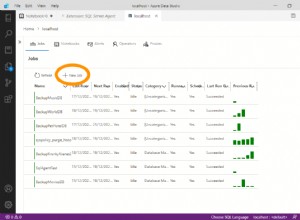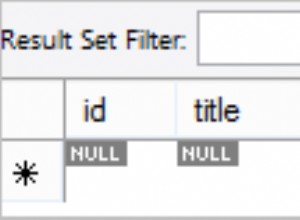Pour appeler la fonction à partir d'une requête SQL, vous devez convertir les paramètres en votre type personnalisé, comme dans l'exemple suivant.
select form_insertion(array[
cast(row('Form 1', 1, current_date, 1, current_date, 'This is form 1',
array[
cast(row('section-1', 'Section One', 1) as section),
cast(row('section-2', 'Section Two', 2) as section),
cast(row('section-3', 'Section Three', 3) as section)
]
) as form_details),
cast(row('Form 2', 2, current_date, 1, current_date, 'This is form 2',
array[
cast(row('section-2', 'Section Two', 2) as section),
cast(row('section-3', 'Section Three', 3) as section)
]
) as form_details),
cast(row('Form 3', 1, current_date, 1, current_date, 'This is form 3',
array[
cast(row('section-1', 'Section One', 1) as section),
cast(row('section-3', 'Section Three', 3) as section)
]
) as form_details)
])
Notez que les tableaux PostgreSQL n'ont pas de propriété .COUNT. Vous pouvez parcourir un tableau par plage d'index avec array_upper fonction :
for i IN 1..array_upper(formdetails, 1)
LOOP
-- your code here
END LOOP;
Depuis PostgreSQL 9.1, vous pouvez utiliser l'instruction FOREACH pour parcourir le tableau :
create or replace function form_insertion(formdetails form_details[])
returns varchar as $$
declare
detail form_details;
sec section;
begin
foreach detail in array formdetails
LOOP
RAISE NOTICE '%', detail.formName;
foreach sec in array detail.sections
LOOP
raise NOTICE '%', sec.sectionName;
END LOOP;
END LOOP;
return '';
end;$$
language plpgsql;




